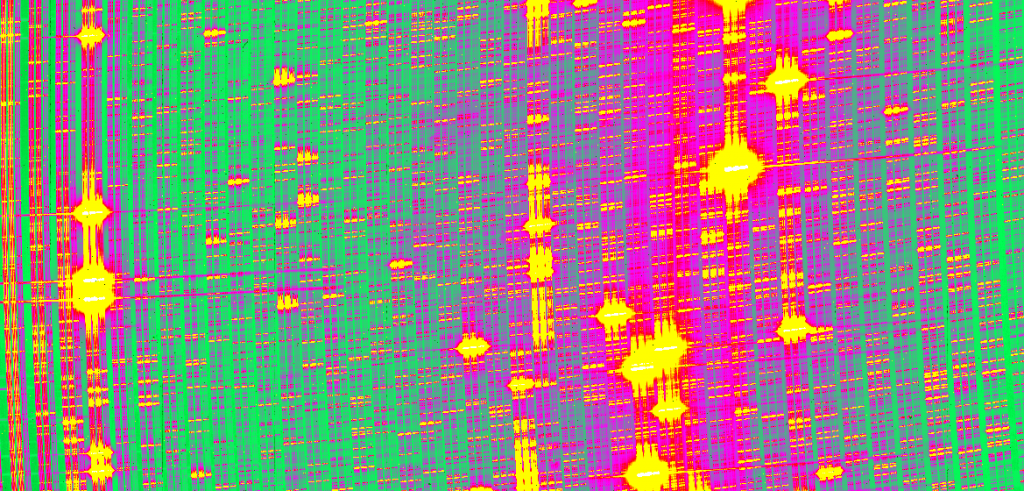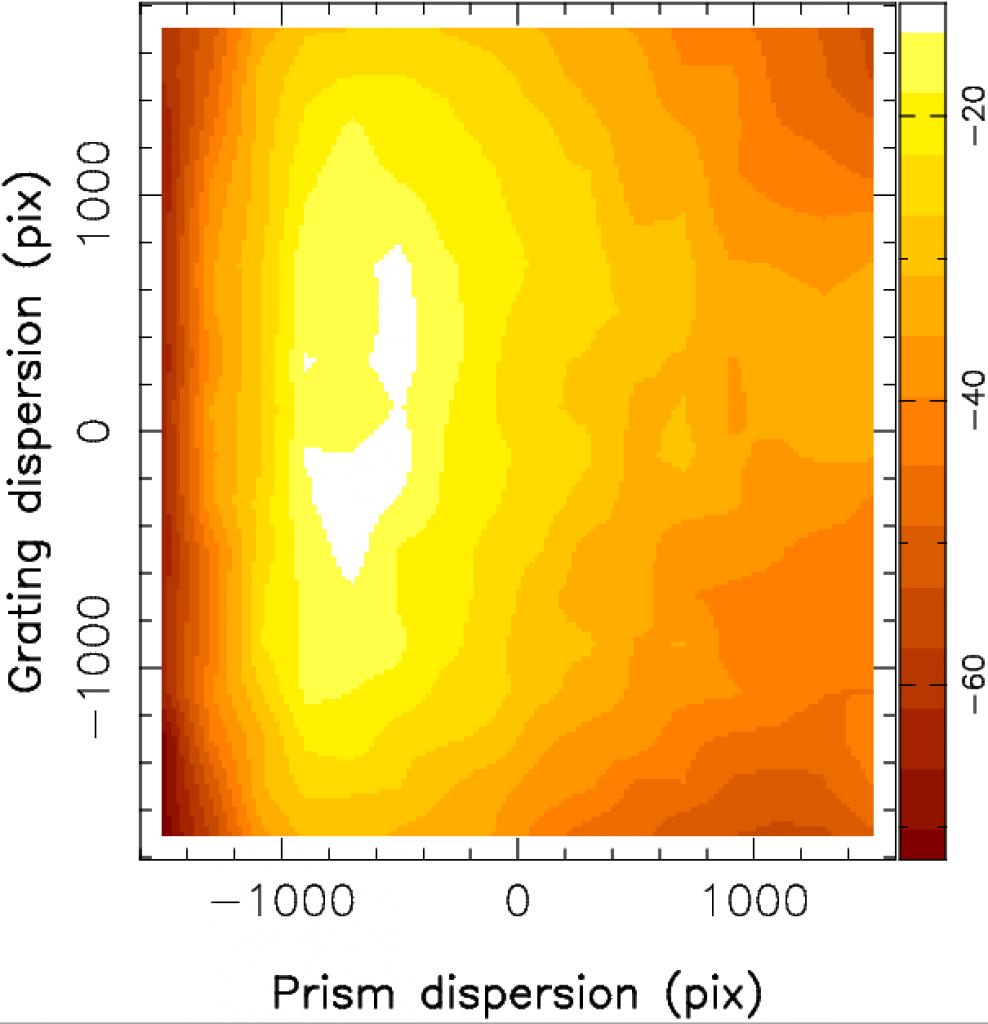2018 April: First SPIRou images with H4RG array
SPIRou collected the first calibration images with its science-grade H4RG array
After switching the SPIRou detector to a new-generation science-grade H4RG array, a 2nd cryogenic cycle was launched at CFHT (6th cycle since the beginning of the SPIRou tests, in 2017 March). Three weeks later, the SPIRou spectrograph is cold (~1 week needed) and thermally stable at a level better than 1 mK rms (~2 additional weeks needed). The focus as measured with a Hartmann mask is almost perfect, with a defocus of only 28 µm. This shows in particular that the detector replacement procedure is accurate / repeatable to within better than 30 µm, despite the differences in the Focal Plane Array (FPA) and support mechanics used to hold the H4RG detector at the spectrograph focus.

The collected échelle spectra, obtained with the hollow-cathode lamps and Fabry-Perot etalon of the SPIRou calibration unit, now cover the full spectral domain (and even slightly more, from 0.96 to 2.48 µm). They exhibit sharp lines whose width is fully compatible with Zemax predictions, confirming that SPIRou reaches its nominal spectral resolving power of 70 000. Initial radial velocity (RV) experiments were also carried out, confirming prior results with the H2RG that SPIRou is capable of achieving a relative RV precision of better than 0.2 m/s rms on timescales of 24 hr.
SPIRou is now ready for its first observations of real stars, with a technical commissioning run of a few nights scheduled for 2018 April 24, to be followed by a second one late May. Early June, the spectrograph will be reopened for the last time in a long while, in order to correct for the remaining 28 µm defocus of its detector. Science verification observations should follow late July to mid August to finally confirm that SPIRou can efficiently carry-out its ambitious discovery / exploration program on planetary systems of nearby red dwarfs like Proxima Centauri and star / planet nurseries, like the well known ones in the Taurus or Ophiuchus constellations.
SPIRou tests at CFHT were carried out by Sébastien Baratchart (IRAP/OMP, currently at CFHT for a 6 month leave) and Claire Moutou (CNRS / CFHT), with help from Greg Barrick (CFHT) and the whole CFHT team. Data analysis was carried out by JF Donati (IRAP / OMP).




